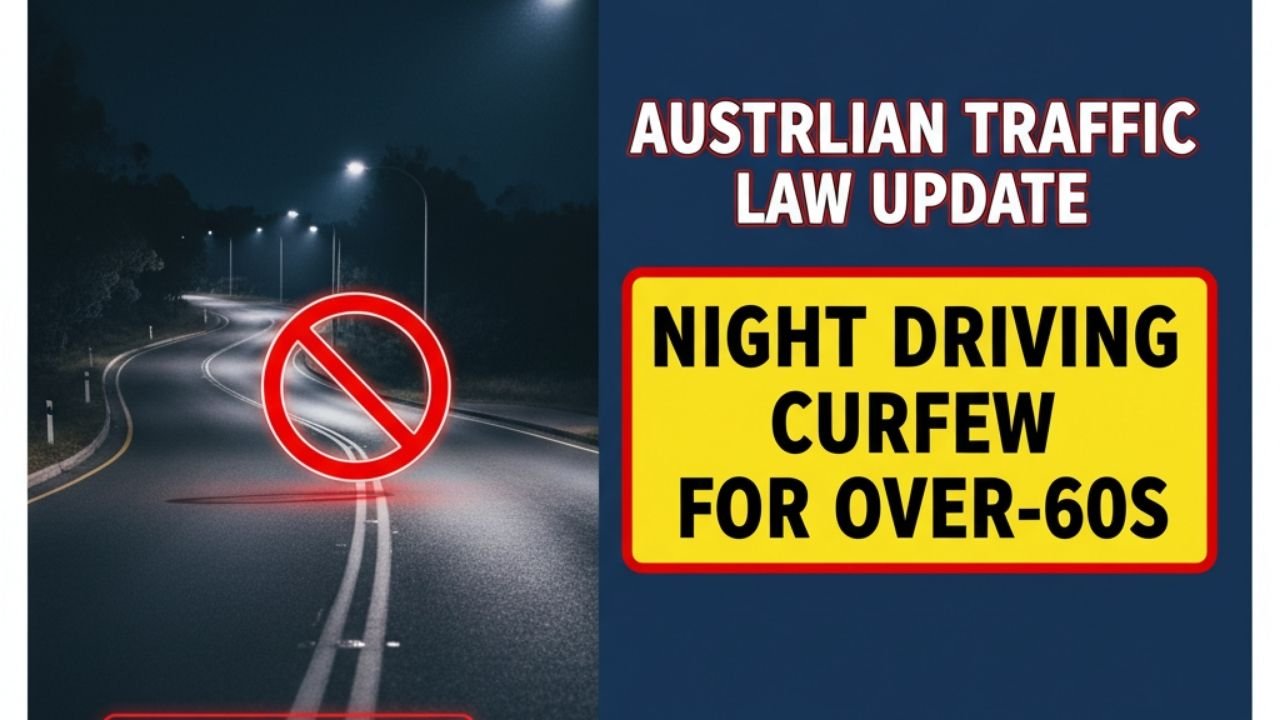Australia has introduced a new night driving curfew for drivers aged 60 and above, effective September 2025. This rule is designed to reduce late-night accidents involving older drivers while keeping communities safer. While some seniors may see it as restrictive, authorities emphasise that it’s a proactive safety measure to protect both drivers and others on the road.
Why the Night Driving Curfew Was Introduced
Older drivers face unique challenges at night, which increase accident risk:
- Reduced night vision makes it harder to see hazards.
- Slower reaction times during low-light conditions can delay responses.
- Increased fatigue in the late evening and early morning hours.
By limiting driving during high-risk hours, the government aims to lower accident rates and improve overall road safety.
What the New Curfew Rules Entail
The night driving restrictions apply primarily to drivers aged 60 and above:
- Curfew hours: Generally late evening to early morning (hours vary by state and territory).
- Exemptions: Seniors who pass strict medical and vision tests may still drive at night.
- Conditional licences: Drivers with certain health conditions may be limited to daytime driving.
These rules ensure that only drivers capable of safely navigating night conditions are on the road.
Medical Assessments and Licence Renewals
The curfew comes with stricter health requirements for senior drivers:
- Regular medical checks are mandatory for drivers over 60.
- Vision assessments help ensure safe driving abilities.
- Failing tests may result in restricted or conditional licences.
These assessments help maintain road safety while allowing healthy seniors to keep their driving privileges.
How Seniors Can Adjust to the Curfew
While this may require lifestyle changes, seniors can continue to enjoy independence safely:
- Schedule evening activities earlier in the day.
- Use public transport, rideshare services, or family assistance for night travel.
- Maintain regular medical check-ups to qualify for exemptions if possible.
Part of Australia’s Road Safety Strategy
This measure aligns with the “Vision Zero” strategy, which aims to reduce road fatalities to near zero by 2050. Authorities stress that it is intended to support safe driving, not take away independence from older Australians.
FAQs
Q1: Who does the night driving curfew apply to?
Drivers aged 60 and above, depending on their health and licence conditions.
Q2: What hours are restricted under the curfew?
Generally late evening to early morning, varying by state and territory.
Q3: Can seniors still drive at night if they are healthy?
Yes. Those who pass rigorous medical and vision tests may qualify for exemptions.
Q4: Will seniors lose their licences because of this rule?
Not necessarily. Many will keep their licences but may face restrictions such as daytime-only driving.
Q5: Why is this curfew important?
It helps reduce night-time accidents involving older drivers, protecting both seniors and other road users.
Conclusion
The new night driving curfew for over-60s in Australia is a crucial step toward safer roads. Seniors are encouraged to stay proactive with medical and vision check-ups, plan daytime travel, and explore alternatives for night trips. With preparation and awareness, older Australians can maintain their independence while minimizing accident risks and supporting national road safety efforts.



